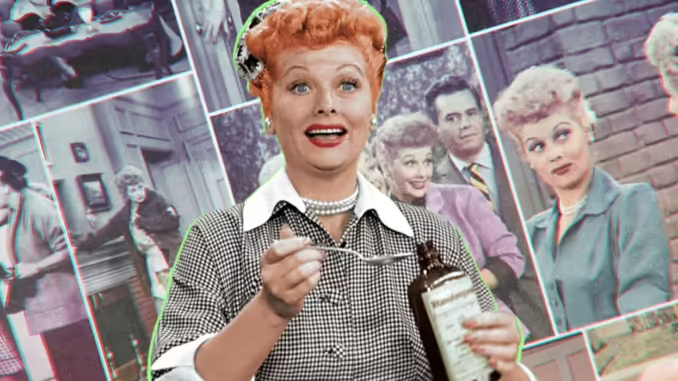
When it comes to I Love Lucy, arguably the greatest Classic TV sitcom in television history, it’s usually Lucille Ball and husband Desi Arnaz as Lucy and Ricky Ricardo that first come to mind. But in truth, equally important to the show were their onscreen best friends, Ethel and Fred Mertz, as played by Vivian Vance and William Frawley — and in particular Ethel, who became Lucy’s comrade-in-schemes from episode to episode.
“It took several months of filming for Ms. Ball to realize what she had with Vivian,” suggests Geoffrey Mark, author of The Lucy Book and Ella: A Biography of the Legendary Ella Fitzgerald, “which is why, as the show goes on, the Ethel Mertz character gets more and more prominent, because she realized that as well as she and Desi worked together, actually the better team was Lucy and Ethel.”

And yet as true as that is, an equal truth is the fact that over the years Vivian hasn’t gotten the sort of attention that she actually does deserve. “I think she’s always been a mystery to most of the I Love Lucy fans,” he says of the actress who can currently be seen on Decades TV on both I Love Lucy and The Lucy Show. “Her early background is mysterious, not because you can’t find these things out if you look for them, but people just don’t look for them.”Well, we are. One of Robert Andrew Jones Sr. and Euphemia May Jones’ six children, she was born Vivian Roberta Jones on July 26, 1909, in Cherryvale, Kansas, a town she supposedly disliked because it was just as oppressive as her family was. In fact, according to Theater Mania, when she decided to become an actress, there was no support on the home front. Notes the site, “As a teenager, she was a cheerleader for Independence High … But it was the legitimate stage that Vivian wanted, though her mother was dead-set against it. ‘You want to be an actress, trying to lead men into sin?’ she snarled. ‘You are going to hell.’”
Scroll to take a look back at Vivian’s tremendous career.
The Little Theatre
The above was not exactly a ringing endorsement. Nonetheless, as a teenager, Vivian moved to Albuquerque, New Mexico, where she fared much better. It was then that she changed her last name to Vance and began performing at the Albuquerque Little Theatre in 1930, where her credits would include This Thing Called Love, The Cradle Song and, in 1932, See Naples and Die. Of the latter, the Albuquerque Journal enthused, “It was Vivian Vance’s night. Her entrance was marked by applause. She was stunning. Her gestures, her inflection of voice, her mannerisms — all Vivian Vance and all the business of a finished actress.”
Even before that, in 1930, she was getting rave reviews while performing in Whose Baby Are You in El Paso, Texas. The El Paso Evening Post buzzed, “Vivian Vance proves a pleasant surprise. In this show, she throws off some of the restraint that has handicapped her acting before and throws herself into the business of making herself beautiful and human. Miss Vance has demonstrated her ability to sing ballads. This week she puts over a ‘blues’ number that is splendid. We like this blond lady and hate to see her leave El Paso.”
